You know that moisture and dust can damage your cameras and lenses. Prolonged high humidity levels (65-70% or higher) can damage your lenses and certain parts of your camera body through oxidation (rusting) or fungal growth. High atmospheric humidity provides an ideal environment for fungal spores to grow and spread beneath camera lens coatings, permanently damaging them.
Here are some precautions you can take to keep your camera equipment in a humidity-controlled environment at all times. This will prevent the growth of lens fungus.
The ideal humidity level for your camera and lenses, to prevent fungus growth, is between 40% and 50% RH. If the humidity in your environment is higher than this, you may need to use a camera dry box to reduce the humidity level so that your camera equipment does not become an ideal environment for lens fungus to thrive.
A good camera dry box can maintain the humidity level of the air in it between 40% and 50% RH all through the year. This will keep your camera equipment safe. But first, we need to know more about this fungus that can harm your camera lenses.
What Is Lens Fungus?
When dust and moisture enter a lens, they create an ideal environment for fungal spores carried by the dust to germinate and grow. The fungus then spreads across and between the lens elements, leaving behind its distinctive pattern.
Lens fungus can soften images, and in severe cases, eat away at the adhesive between compound lenses, separating them.
Removing Lens Fungus is a difficult task that should only be performed by a professional. We always advise photographers to prevent fungal growth rather than attempting to clean it up. After being affected by fungus, the lens will never be the same.
In this article, I will discuss four steps you can take right now to stop fungus growth as well as three humidity control solutions.
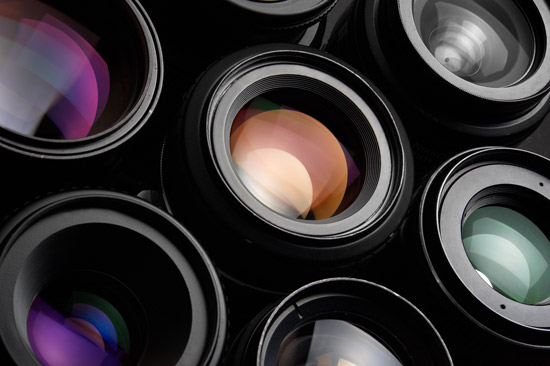
How To Protect Camera Lenses From Fungal Growth:
- Before putting your camera and lenses away for long-term storage, wipe them down and lightly dry any moisture with a hair dryer. A fungal attack begins with fungal spores in the air and organic material, such as oil from our fingers that isn’t wiped off a lens.
- Keep your camera gear in an airtight container.
- In the container, use Silica Gel or another desiccating material to keep the relative humidity at around 45% RH (below 60% RH and above 30% RH). This is done automatically by a Dry Cabinet (see details below)
- Make frequent use of your camera and lenses. Fungus growth is inhibited by exposure to fresh air, light, and UV rays. Rubber parts that are used frequently do not degrade as quickly.
Here are some general camera maintenance tips – How to maintain your Camera.
Where Does Fungus Grow on Cameras, and How Can It Affect My Lenses?
Lens fungus typically grows between lens elements and beneath the non-reflective coating of the lens element.
It is difficult to eradicate once it has begun to grow.
You’ll notice that it causes soft spots in your photographs. It’s like having a fingerprint smudge on your lens that blurs the image. The solution is simple: avoid getting moisture in your camera lens…
Avoid These Growing Conditions for Fungal Spores:
These are the ideal conditions for fungal spore growth, so we must avoid them:
- Avoid exposure to Relative Humidity (RH) of 70% or more 3 days or more
- Avoid storage spaces with little or no air movement
- Avoid complete darkness for extended periods of time
- Remove nutrient sources such as textile lint, traces of oil and grease, varnish, dust, and dirt.
- Avoid Temperatures between 10°C and 35°C.
These are the key factors that are necessary for the fungus spores to grow in your lens. Of these, removing moisture and humidity from the camera’s lens is probably the most important. However, even if some of the conditions are removed, the fungal spores will not be able to grow.
For example, even if there are favorable temperatures and darkness, they will not be able to grow if there is no humidity and no nutrition source. Therefore, our article deals with removing humidity from your photography equipment storage spaces to prevent fungus proliferation on your lens.
How To Prevent Lens-Fungus Growth?
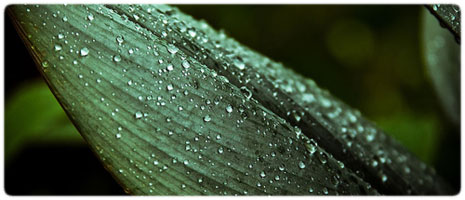
Photo: dawn_perry
You can prevent lens fungus growth by a) Exposing it to UV light, b) avoiding high humidity environments c) using the equipment so that stale air is removed.
Fungal spores are sensitive to UV light and need humidity to grow. If they are taken out of their ideal environment, they don’t grow.
So what’s the solution? The cheapest option is to use your camera as frequently as possible and to keep it in an airtight humidity-controlled storage container when it’s not being used.
Exposure to UV light kills the fungus, so you could use a UV bulb to kill it, but you risk damaging your eyes and skin. For this reason, the humidity-controlled storage option is the best option for photography enthusiasts, .
Exposure to Sunlight or UV Light
Using your camera in sunlight from time to time exposes it to UV light. However, you should not leave your camera in the sunlight unattended as it could be seriously damaged. Prolonged UV exposure also degrades rubber (I wrote an article about preserving your camera’s rubber parts).
Ok, so you’re going to use your camera on a regular basis, but what if you live in a region that is perpetually humid?
3 Humidity Control Solutions
As always, both cheap and expensive options are available to solve your problems. In either case, you’ll most likely need a Hygrometer so that you know what the relative humidity is at any given time.
1. Dry Cabinet for Cameras – Best Option
A Camera Dry Cabinet or Dry Box will let you keep your camera equipment in the ideal humidity range throughout the year, no matter the humidity outside. They are usually electronically controlled and look like mini glass-fronted refrigerators with cameras stored in them. All you have to do is set the desired humidity to 45%RH and it will take care of the rest.
Lit well, these boxes can look very classy and can keep your expensive equipment perfectly safe for years. Here are a few options on Amazon, that look rather professional.
These automated dry boxes for camera storage have digital controls to set the relative humidity to the exact level that you want. They also have a built-in Hygrometer display. Even so, having one inside the dry box to monitor the actual interior status is probably a good idea.
2. Silica Gel – Cheaper
Indicating Silica-Gel is a cheap, and completely safe way to remove humidity from the air. It is a desiccant (something that dehumidifies the air in its vicinity). They remove the moisture from the surrounding air, but can get saturated, and will have to be recharged at regular intervals.
These crystals of Silica gel are either orange or blue colored when they’re fully absorbent and green or pink when they’re fully saturated with moisture and can not absorb any more water.
You can Recharge your Silica Gel when they are fully saturated with moisture. Please read my in-depth article about recharging Silica Gel for more information. Keeping the silica gel in the camera storage beyond its saturation point can make some of the moisture escape back into the atmosphere, so be sure to recharge it often.
You can use a container like the Silica Gel Dehumidifier box to store the Silica Gel and create enough airflow through the crystals. You can buy a little Silica Gel and reuse it up to 800 times.
3. Room Dehumidifiers & Air-conditioners – Expensive & Unnecessary
Full-room De-Humidifiers use mechanical means to reduce the relative humidity of the air. You may have seen some dehumidifiers on shopping websites already if you live in a humid area. However, you should remember that a small, or low-powered dehumidifier will most likely not help you achieve the result that you’re looking for.
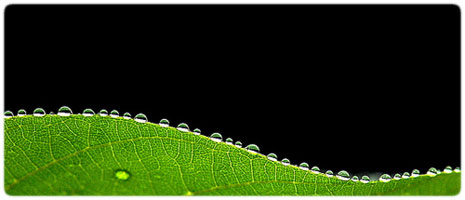
Air conditioners are useful if you live in a region that is both hot and humid. You’ll benefit from the cool air too, but of course, running it all the time is probably not practical or healthy.
Your Air Conditioner will reduce the ambient humidity to a level that should be safe for your camera equipment. This is because Air Conditioners reduce the ability of the air to hold humidity in it, as they chill the air.
No matter which solution you choose, you should get a hygrometer to monitor the air quality around your camera equipment.
How Does Humidity Affect Camera Equipment?
High humidity and delicate equipment generally don’t go well together. Here are a few concrete reasons why you should avoid storing your camera equipment in high-humidity conditions.
High Humidity Helps Lens Fungus to Thrive
As mentioned above, Fungi or Mold thrives in a dark, humid place with little airflow. Very often camera equipment ends up in drawers, cupboards, or basements; all of which are dubious places to store them.
Keeping your camera in storage for too long is also a recipe for disaster. Take your camera and lenses out of storage frequently and expose them to light and fresh air from time to time. This will also ensure that your storage doesn’t have any stale air in it.
High Humidity Accelerates Rubber Degradation
In addition to providing a place for lens fungus to grow, high humidity also accelerates the degradation of rubber parts on a camera’s body. This is another reason why you will want to maintain a low-humidity storage area for your camera and lenses.
A camera or lens that is used well, and stored correctly is most likely to see many years of successful photography
– Beyond Photo Tips
Is Low Humidity Bad for Cameras?
If high humidity is bad, wouldn’t it be better to store your camera and lenses at ultra-low humidity levels? No. Ultra-low RH levels are also not good for your equipment.
All camera lenses and bodies have many moving parts – gears, sliding thingies, and rolling thingies – and they’re all lubricated with a special light machine oil. Maintaining 30% RH or lower could dry up the lubricant oil that lubricates your camera quicker than usual. This will make these parts wear out sooner, and require frequent repair.
Low relative humidity also affects rubber parts on the camera and lens. Rubber is affected by low humidity and can start cracking if it is not used often. This is called Dry Rot in Rubber.
What Is the Best Humidity for Camera Dry Box?
The ideal relative humidity (RH) setting for your Camera Dry Box is 40% to 50%. Do not store your camera equipment at 60% or higher for more than 3 days. At the same time, storing cameras and lenses at 30% or lower humidity for an extended period of time is likely to create mechanical issues in your expensive equipment…
Safe Humidity for Storing Electronics, Lenses & Cameras
All equipment has an ideal storage humidity range. To calculate the ideal humidity for camera storage and for your electronic equipment, look at its optimal operating humidity range in the operation manual, and then halve that number. This is a good rule of thumb. However, if the operations manual has a recommended storage humidity, use that instead.
Let’s take as an example, the Canon 1Ds Mark 3. The Canon EOS 1Ds MK III‘s operating humidity range is 85% RH or lower. By dividing the operating humidity range in half, we find out that a good RH range for storage of this camera would be around 40-45% RH. You can repeat this for your cameras and lenses to find the ideal humidity (RH %) to store your camera equipment at.
Recommended Ideal Humidity for Camera Storage
From my experience, I have found that the ideal dry cabinet humidity for long-term camera and lens storage is 40%. You will want to figure out your own setting to suit your environment.
Summary
To wrap up, remember that the best maintenance/fungus prevention plan for your camera and lens is to use it often, wipe it down, and store it in a humidity-controlled environment.
Regular use also keeps the lenses and camera body exposed to sunlight, which will prevent lens fungus growth.
If you don’t use your camera often, make sure that it is stored in a well-ventilated area with an ambient humidity range of 40%-50% RH. Also, remember to wipe it down and gently dry it with a hairdryer before putting it away.
If you live in a humid part of the world, you could try one of the three options mentioned above – Chemical Desiccants, Camera Dry Cabinets, or full-room De-Humidifiers.
If you have had experience with lens fungus and humidity, and if it has affected your camera equipment, let us know about your experience. If you have a better solution to the problem of lens fungus growth, please leave a comment so that our readers may benefit from your experience.
My personal favorite is the dedicated camera dehumidifying cabinet for its ease of use, low power requirement, and aesthetics – Slinger Electronic Dry Cabinet 90L. What’s yours?
References:
- Zeiss Service Information – Fungus On Lenses (In German)
- How to Recharge Silica Gel – Beyond Photo Tips
- Why Does Rubber Dry Rot?
- Silica Gel Specifications
Updates:
August 2022: A previous version of this article suggested an ideal RH of 35-45% RH as an ideal storage humidity. As of August 2022, we have revised that to 40-50% RH.
Help Us To Continue Creating
Get our email newsletter to stay up-to-date with our latest posts. It’s easy to read and is mailed once in 2 weeks.
The easiest way to support Beyond Photo Tips is by using our affiliate links when you buy anything at all. It will never cost you anything extra, and we get a small commission from it, which helps us a LOT! We share our recommended equipment list here.
Some of the links to products on this website are affiliate links, and we only ever link out to gear that we recommend.
You could also show your appreciation by buying us a coffee. Finally, we appreciate you being a part of the community, so do say hi!

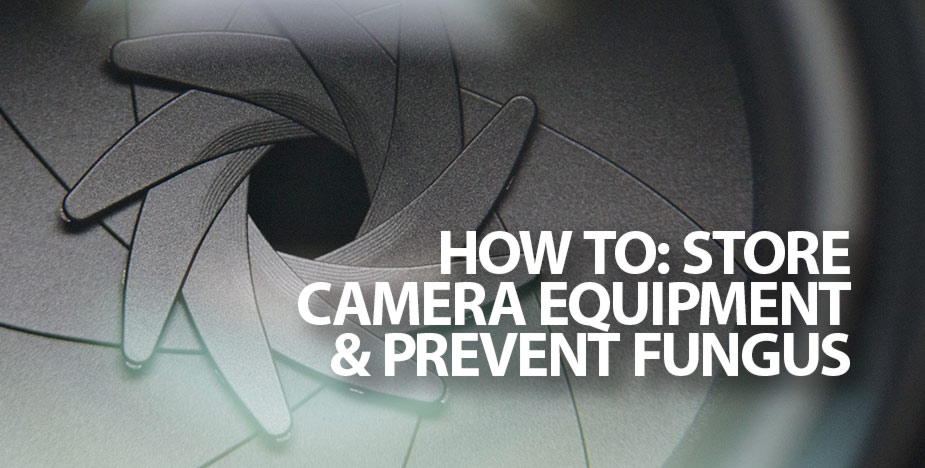
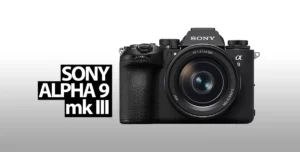

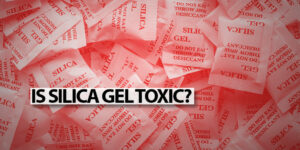

Susheel,
I just came across your site; thank you for the recommendation for Adorama Camera – very much appreciated.
Sincerely
Helen Oster
Adorama Camera Customer Service Ambassador
[email protected]
http://www.adorama.com
We translated this article in spanish: http://news.deviantart.com/article/62129/
EdWheeler,
Dude, that’s Crazy…
You actually translated it into Spanish! WOW! I’m thoroughly impressed and thrilled.
I wound up with a colony of mold on a Nikon NC filter. Didn’t affect the lens the filter was on. Ordered another NC filter – problem solved, but what to do with the challenge, namely, the fungus-infected filter?
Lens cleaning solution was ineffective. (I knew it would be, but I had to try … )
Next brainstorm: a few moth crystals (naphtha) and the filter in a sealed glass jar. Over a period of several days, the mold spots are shrinking, and some have disappeared entirely. A cure? Temporary or permanent? Time will tell.
Anyone else try this remedy?
Dr. Anderson,
This is an interesting observation. My concern with Napthalene balls is that the chemical could damage the lens itself. Do you have any further information on that?
This is a very interesting article although I knew certain things I still had doubt about them. This article made it clear for me. I live in Malta and our Humidity is exaggerated…
recently I took my Canon 350D to a service technician to remove what I thought it was only dirt… He ended up telling me I was infested by Fungus growing all up inside and risking of eating my mirrors.
I don’t use my camera very often and I used to seal it in my bag cause I thought it would be protected. I’m trying to get rid of this fungus… in two cheap ways as described in this article… Stuffing my Bag with packets of Silica gel and leaving my gear outside in the sun.
But I’m still asking some questions as I still a noob on such matters:
-When leaving the camera in the sun do you take off the caps leaving the sensor & lenses unshielded? as I removed the UV filters and the lens from the body but not the caps.
Ivan,
thank you for stopping by. While leaving your camera out in the sun, do remember two things.
Read your camera’s instruction manual. It tells you what you can/should do and can/should not do.
Your camera is affected by heat just as it is affected by humidity and dust. Remember that leaving it out in the sun for long periods of time will spoil it. My suggestion is to use it often, and just expose the insides to the sun by removing the lens for not more than a couple of minutes at a time.
Exposing your sensor to the sun is surely a bad thing. Don’t try it.
When exposing your lenses to sunlight, remember the same guidelines. And do remove the lens caps at both ends for a short while
Remember to keep your camera dust-free by doing this indoors, or in a place with minimal/no breeze. Breeze typically carries dust.
Above all, remember to use your camera frequently. That’s the best medicine… It’ll teach you to love your equipment, and to treat it with care. It will also hopefully reward you with beautiful memories and a wonderful hobby.
Hi,Susheel. I have read your articles and it is very helpful for me. But, I wonder if you could give me additional tips because I am living in tropical country. And I invite you to visit my blog at (bad link). Your advice is highly appreciated since i’m still an amateur.Success be with you!
Lusi,
These tips work no matter where you are. I’m glad that you found them useful.
Cheers!
Hi there…,
Wow that was some great advice there really appreciate the effort i too did learn alot abt storing my camera…!!
I just wanna know is that is it ok for me to leave the camera with the lens on or remove it and store them separately…. in da dry cabinet i have a 40L dry cabinet and i had the RH at around 30% then now i got it to maintain at 40% its fine rite…
Regards
Hi Shirantha Rajapakse,
Thanks for the feedback. Personally, I don’t think that there’s much of a difference. However, it may be that the air inside the camera body and at the rear of the lens may be better dehumidified if they are stored separately.
However, I doubt that this is of much importance, and that it will not make much of a difference practically. So, go ahead, store them as you prefer.
Susheel Chandradhas,
Thanks for you article, this really help. Now I know how to take care my lenses. I just send one of my lenses, Nikkor 18-200 VRII for service due to fungus containminated inside the lens. It’s really hurt me. one question, can I store the effected lenses with the good ones ?
rgds
Ricky
Ricky,
This is a great question, but one that I don’t have a definitive answer to. All the evidence goes towards it being OK if you store them together, as long as the humidity is under control and you use the lenses, and expose them to UV light on a regular basis, however, only time will tell for sure. If you’re uncomfortable with storing them together, identify a nice dry spot, that’s not dark, and place the affected lens there, away from your good lenses. I’m sure you won’t regret that. In the short term if carrying lenses together in a camera bag, I don’t think you’ll have trouble. So go ahead and do it; but remember to use your silicagel sachets.
All the best.
Some great suggestions and practical advice, thanks.
Here is a trick that worked for me when I needed to store my gear for a long period. I cleaned it all up in a really cold air-conditioned room and then glad-wrapped everything and left it lying around while the room temperature was gradually brought back to ambient over a few hours to avoid condensation. Worked really well, lenses and bodies all free from fungus after almost 5 years of storage, when I re-opened them.
Sounds interesting. Thanks for contributing that tip.
Hi Sir Susheel Chandradhas,
thanks for the article above, it’s helpful! I just wanted to ask about my electronic moisture absorber or auto silica gel electronic recycled device, i read some articles about it and i read there that it dries moisture even the lubricant or light machine oil, is it true? All my gears are in my lowepro bag with silica gels and the device, is this safe? thanks alot sir. i’m from the philippines!
regards.
Raisin
Hi Raisin,
Yes, it is true that lowering the humidity level a great deal can dry out the lubricant oil in the camera. Which is why we recommend that you keep a tab on the humidity levels using a hygrometer (follow the link in the article to find some good ones). I use a hygrometer to ensure that the camera equipment stays around 45-55%RH.
Hope that helps.
thanks sir susheel! ;@)
You’re very welcome, sir.
Fungus? This is what I do. Insert lense into a condom (not a joke). Squeeze out the air that traps between the lense body and the condom wall and tie a knot at the open end. No air no fungus. Use of a vacum container will extract the air that is contained inside the lense body and once the container is opened, humid air from the open will sneak back into the lense and will cause fungus growth inside the lense. Use a big baloon for a big SLR body. Indoor or outdoor, the equipment is protected from fungus. Don’t untie the condom at once, if it is taken out from an aircon room to outdoor. Wait for 15 minutes, atleast. Thanks.
Prem, If you’re serious about this, you’ll find that the lubricant on the condom could mess up your lens surface. Perhaps you could write about your technique in greater detail and post a link to it here? Thanks.
Thanks a lot ! I didn’t know that this could happen ,it’s
my first DSLR, do you know if Canon will clean/repair under
guarantee ? (camera has less than 1 year) I feel a bit upset that
it happens with this expensvie camera when it never happened with
cheaper ones ! Can we clean it at home or really need a shop ?
Thanks again.
Hi! Well, it’s not really a fault in the manufacturing, so it won’t be covered under warranty. You should be able to get fungus that is on the top element with regular cleaning, but you’ll have to go to a shop if the fungus is in one of the inner lens elements.
Hope you manage to get it cleaned without trouble.
Great post, thanks so much for the info. Cheers!
You’re welcome. I’m glad you found it useful.
Thank you so much for the information it helps a lot👍
I’m glad that it helped, Azeez. :D
I have what looks like some form of crystal mould on my camera body, possibly from silica gel packets, which surrouded it. The camera was stored in a cupboard for quite a few years without being used or seeing the light, I’m ashamed to say.
Any ideas how I clean the mould off?
Hi Roy,
Looks like the best way to get this done is to send it to a camera mechanic. Hope you’re able to have it fixed.
Thank you for this insightful article. Just one question though: i recently came up with a homemade dry box (tnx to some diy vids in youtube) but i am not confident on its functionality. I purchased a cheap hygrometer to find out if its rh is good enough, and it yielded a 17% result. Assuming the reading is accurate, would this be considered too low, and therefore, is not recommended for use? Thanks and hoping to hear from you.
Hi Tim,
I think anything over 20% is pretty decent, but as mentioned, it’s usually the zone around 35% to 45% that’s the sweet spot. That said, don’t worry about it too much. Use your equipment often. Have fun with it, and don’t store it away for too long. Things should be fine. :)
Hi Susheel.
I wonder if rice could be used to reduce the amount of moisture in the air surrounding the equipment. I have seen it used successfully on water damaged phones etc.
Hi Mick,
You probably could use rice; I don’t have any proof either way. But tell me, why would you put organic material into your camera’s storage area that could promote fungus growth by itself? Silica Gel is much more efficient, and since it’s inorganic, is definitely a safer option. You’ve spent a lot of money on your camera, don’t leave the rest to chance. Silica Gel is inorganic, safe, and can be reused multiple times. I definitely suggest using Silica Gel over rice.
As a photographer in Spain I have to be careful of dust and high humidity. On one photoshoot my lens lost communication with the camera body. Almost a complete disaster!
How did you manage in that situation? How did you complete your shoot?
Referring to: … to figure the optimal RH to store your equipment at is to look at its optimal operating humidity-range and halve that number. For example, the Canon EOS 5D MK III’s operating humidity range is 85% RH or lower, so a good indicative range to store the camera would be between 35% and 45% RH.
Do you in this example divide 85% by 2?, How do you derive lower and upper limits?
Do we really need know a camera operating humidity because quite commonly recommended range of 35-45% has known to damage selected equipment?
Hi Kelvin,
Yes, I did divide 85% by 2. There is no real hard and fast rule for the upper and lower limits. But I’ve seen similar humidity ranges mentioned on some camera manufacturer websites… A quick google search turns up this reference: https://www.sony.com.sg/electronics/support/articles/00160168 where they mention “between 40 and 50% RH”.
Could you help us all out by sharing the resources that show 35-45% to have damaged equipment. I’ll look too…
I do know it’s possible for it to happen, so showing concrete examples of when not to use that low a RH range would help explain correct usage.
Thanks for stopping by and leaving your note. Much appreciated.
Great post, Susheel! As I explore your blog, I’m struck by how thoroughly you go into the subjects you write about! Many thanks for the effort.
Thanks for exploring the content as you have, Rohan. I’m glad you find it useful.
Hi Susheel,
Vic here from England, I think there’s no need to ask you again about the fungus thingy ‘coz I read your reply with Ricky that storing lens with fungus with the new lens is not a good idea. And also I don’t want to take the risk of storing them together with my old equips such as Nikon boy cam and nikon lenses. So what should be the ideal C/F for my Sony camera and sony lenses? I just bought a new dry cabinet.
Best regards!
Hi Vic,
Congratulations on your new dry cabinet!
Sony has a rather wide temperature range for the operation of some of its cameras … -10 to 40°c.
The manual for the A7IV says not to store your camera “In an extremely hot, cold or humid place”.
So for most purposes, room temperature will be ok for storage, and your new dry cabinet will take care of the rest!
Hi, Great Article..!!!
Just want to ask how much silica gel crystals (in grams) should I put in plastic container with my DSLR+Kit Lens so that it does not over dehumidify the space or dry out the lubricant oil in the camera.
Silica Gel Crystal i purchased (500Grams) from Amazon.
Hi Vaibhav,
Thanks for your comment. Silica Gel doesn’t really pull the humidity below 40% RH, and since the ideal storage humidity is between 40-50%, you can safely load-up on Silica Gel in your container. I use quite a bit of excess Silica Gel in my storage box, and have not observed any issues.
Many thanks for the prompt reply…
My further query is I use my DSLR very rarely and its mostly stored only, So can I keep Silica Gel all the time in the container in any season throughout the year.
In my city high Humidity period is only in 3 months.
Yes, you can. There shouldn’t be any problem with doing so. Silica Gel does not give off any fumes, and is safe to use with your DSLR camera and lens.